我国财政透明度对财政支出效率的影响研究
VIP免费
摘 要
当前我国财政透明度尚处于较低水平,无法满足公众日益增长的对财政信息的迫
切需求。国际预算合作组织(IBP)公布的 2010 年预算透明度调查结果显示,中国在
所调查的 94 个国家里排第 79 位,未达到财政透明度所要求的基本标准。同时我国财
政支出过程频繁出现资源配置不合理、挤占挪用资金、腐败等严重影响财政支出效率
的现象。为此,针对“财政透明度是否对财政支出效率有影响”、“影响程度有多大”
两个问题,本文将从理论分析和实证分析两个阶段展开研究。
在理论分析阶段,首先探讨财政透明度对财政支出效率的影响路径。分析较低的
财政透明度加剧政府与公众、政府内部机构之间的信息不对称,导致政府监督不完全、
社会监督缺位、逆向选择和道德风险,进而滋生财政资源配置错位、挤占挪用专项资
金和腐败等损害财政支出效率的现象;其次,结合国内外财政透明度评估结果及我国
审计公告,指出我国整体财政透明度较低、财政信息披露机制不完善、国家审计缺乏
独立性及这些问题对财政支出效率的恶劣影响,说明提高财政透明度对优化财政支出
效率是十分必要的。
在实证分析阶段,首先选取先用 DEA 测度财政支出效率,然后再用最小二乘法
检验财政透明度对财政支出效率的影响效应这一研究思路,分别从我国省级和市级层
面展开研究。在省级层面,本文以我国 28 个省 2007~2009 年的投入产出数据为样本
进行省级财政支出效率的测度,然后分别检验分省财政透明度和分项财政透明度对财
政支出效率的影响。研究结论表明:分省财政透明度增加 1%,财政支出效率可提高
3.74%。政府基金透明度增加 1%,财政支出效率可提高 0.56%;国有企业基金透明度
增加 1%,财政支出效率可提高 1.14%;社会保障基金透明度增加 1%,财政支出效率
可提高 5.35%。在市级层面,本文对我国 74 个市 2010 年的财政支出效率进行测度,
然后检验市级财政透明度对财政支出效率的影响效应。研究结论表明:市级财政透明
度增加 1%,市级财政支出效率可提高 0.38%。省级层面和市级层面的实证表明,提
高财政透明度可有利于财政支出效率的提升。
根据理论分析和实证分析结果,并借鉴发达国家的成功财政透明度经验和考虑我
国国情,本文提出提高财政支出效率的财政透明度优化建议。由于难以获得与财政透
明度相关的数据,本文主要采用上海财经大学 2009~2012 年省级财政透明度评估报告
和清华大学 2010 年透明度评分等两类数据展开研究,使得难以获得准确的结果。今
后的研究可重点关注如何构建合理的评价指标体系对我国财政透明度予以衡量,从而
更精准的反映我国财政透明度的真实情况。
关键词: 财政透明度 财政支出效率 监督机制
ABSTRACT
China's current fiscal transparency is still at a low level, which can not meet the
growing public demand for urgent financial information. In 2010 budget transparency
research of the International Cooperation budget (IBP), China ranked 79 in the 94
countries surveyed, which did not meet basic standards of financial transparency
requirements. At the same time financial resources mismatched, financial funds
misappropriated and corruption occurs frequently during the process of China's fiscal
expenditure which affecting expenditure efficiency seriously. Based on this, this paper
attempts to solve the question “Can fiscal transparency impact expenditure efficiency?”
and “how big of the impact?” from theoretical analysis and empirical study phases.
In the theoretical analysis phase, this paper first focuses on the way financial
transparency affect expenditure efficiency. Fiscal opacity increases the information
asymmetry beteween the government and the public, internal government agencies,
resulting in incomplete government supervision, social supervision vacancy, adverse
selection and moral hazard, and then breed financial resources mismatched, financial
funds misappropriated and corruption which harm expenditure efficiency seriously.
Secondly this paper points out our low financial transparency, incomplete financial
information disclosure mechanism and lack of auditing independence make bad
influence on expenditure efficiency by combining much data from domestic and
overseas fiscal transparency assessment and our audit announcement, indicating
improved fiscal transparency is necessary to optimize expenditure efficiency.
In the empirical analysis phase, this paper selects the research ideas of firstly
adopting DEA to measure expenditure efficiency and then using least square method to
check fiscal transparency’s effection on expenditure efficiency from provincial and
municipal levels. At the provincial level, this paper measures provincial expenditure
efficiency based on 28 provinces’s input-output from 2007 to2009, and examine
provincial and subentry fiscal transparency’s effection on expenditure efficiency.
Results indicate that: provincial fiscal transparency increased by 1%, expenditure
efficiency can be increased by 3.74%. Government funds transparency increased by 1%,
expenditure efficiency can be increased by 0.56%; the state-owned enterprise fund
transparency increased by 1%, expenditure efficiency can be increased by 1.14%; social
security fund transparency increased by 1%, expenditure efficiency can be increased by
5.35%. At the municipal level, this paper measures municipal expenditure efficiency
based on 74 cities’s input-output in 2010, and examine municipal fiscal transparency’s
effection on expenditure efficiency. Results display that: municipal fiscal transparency
increased by 1%, expenditure efficiency can be increased by 0.38%. Demonstration
from provincial and municipal levels shows that improving fiscal transparency can
contribute to enhancing expenditure efficiency.
According to the results of theoretical analysis and empirical analysis, and
considering developed countries’s successful fiscal transparency experience and our
national conditions, we make some suggestions to improve expenditure efficiency from
the view of financial transparency. Considering the availability of data, the fiscal
transparency data is only from Shanghai University’s provincial assessment reports and
Tsinghua University’s municipal assessment report in 2010. Future research can focus
on how to construct a reasonable evaluation system to measure of financial transparency,
so as to show the real situation of China's fiscal transparency more accurately.
Key words: Fiscal transparency, Expenditure efficiency, Oversight
mechanisms
目 录
中文摘要
ABSTRACT
第一章 绪 论 .................................................................................................................. 1
1.1 研究背景及意义 ............................................................................................... 1
1.1.1 研究背景 ................................................................................................ 1
1.1.2 研究意义 ................................................................................................ 2
1.2 文献综述 ........................................................................................................... 2
1.2.1 国外研究综述 ........................................................................................ 3
1.2.2 国内研究综述 ........................................................................................ 5
1.3 研究内容和方法 ............................................................................................... 6
1.3.1 研究内容 ................................................................................................ 6
1.3.2 研究方法 ................................................................................................ 8
1.3.3 可能的创新之处 .................................................................................... 8
第二章 理 论 基 础 ...................................................................................................... 9
2.1 概念界定 ........................................................................................................... 9
2.1.1 财政透明度的涵义 ................................................................................ 9
2.1.2 IMF 透明度守则 ................................................................................... 10
2.1.3 财政支出效率的定义 ........................................................................... 11
2.2 理论依据 ......................................................................................................... 12
2.2.1 委托代理理论 ...................................................................................... 12
2.2.2 公共财政理论 ...................................................................................... 13
2.2.3 公共治理理论 ...................................................................................... 13
2.3 财政透明度影响财政支出效率的路径分析 ................................................. 14
2.4 本章小结 ......................................................................................................... 15
第三章 财政透明度影响财政支出效率的问题分析 .................................................. 16
3.1 我国财政透明度存在的主要问题 ................................................................. 16
3.1.1 财政整体缺乏透明度 .......................................................................... 16
3.1.2 财政信息披露机制不健全 .................................................................. 17
3.1.3 公开审计结果存在阻碍 ...................................................................... 19
3.2 财政缺乏透明度对财政支出效率的影响分析 ............................................. 20
3.2.1 财政资源配置的效率低效 .................................................................. 20
3.2.2 财政资金滥用现象突出 ...................................................................... 21
3.2.3 贪污资金现象层出不穷 ...................................................................... 21
3.3 本章小结 ......................................................................................................... 22
第四章 省级财政透明度对财政支出效率的影响分析 .............................................. 23
4.1 测度财政支出效率 .......................................................................................... 23
4.1.1 DEA 模型说明 ...................................................................................... 23
4.1.2 指标选取与数据处理 .......................................................................... 25
4.1.3 各省的财政支出效率检验 .................................................................. 27
4.2 分省财政透明度影响财政支出效率的实证检验 ......................................... 29
4.2.1 数据选取 .............................................................................................. 30
4.2.2 模型构建 .............................................................................................. 31
4.2.3 检验结果分析 ...................................................................................... 32
4.3 分项财政透明度影响财政支出效率的实证检验 ......................................... 33
4.3.1 数据选取 .............................................................................................. 33
4.3.2 模型构建 .............................................................................................. 34
4.3.3 检验结果分析 ...................................................................................... 35
4.4 本章小结 ......................................................................................................... 36
第五章 市级财政透明度对财政支出效率的影响分析 .............................................. 37
5.1 测度市级财政支出效率 ................................................................................. 37
5.1.1 DEA 模型的指标选取 .......................................................................... 37
5.1.2 样本与数据来源 .................................................................................. 38
5.1.3 各市的财政支出效率检验 .................................................................. 38
5.2 市级财政透明度影响财政支出效率的实证检验 ......................................... 40
5.2.1 样本与数据来源 .................................................................................. 40
5.2.2 模型选取 .............................................................................................. 42
5.2.3 检验结果分析 ...................................................................................... 42
5.3 本章小结 ......................................................................................................... 43
第六章 提高我国财政支出效率的财政透明度优化建议 .......................................... 44
6.1 国际经验与借鉴 ............................................................................................. 44
6.1.1 美国 ...................................................................................................... 44
6.1.2 英国 ...................................................................................................... 46
6.1.3 借鉴与启示 .......................................................................................... 46
6.2 积极建设阳光政府 ......................................................................................... 47
6.2.1 强化信息公开法律的规范性 .............................................................. 47
6.2.2 提升财政监督的独立性和专业性 ...................................................... 48
6.2.3 发挥政府绩效的协同作用 .................................................................. 49
6.3 优化公众参与机制 ......................................................................................... 49
6.3.1 培养公众民主参与意识 ...................................................................... 49
6.3.2 拓宽公众信息获取路径 ...................................................................... 50
6.3.3 提高公众监督效力 .............................................................................. 50
6.4 本章小结 ......................................................................................................... 51
第七章 结 语 ................................................................................................................ 52
7.1 结 论 ............................................................................................................... 52
7.2 研究展望 ......................................................................................................... 52
附 录 .............................................................................................................................. 53
参考文献 ........................................................................................................................ 65
在读期间发表的论文和承担科研项目及取得成果 .................................................... 69
致 谢 .............................................................................................................................. 70
相关推荐
-
公务员思想政治教育研究VIP免费
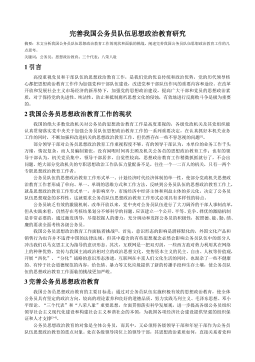
 2024-10-15 30
2024-10-15 30 -
在线社会网络中用户行为的实证分析与机制建模研究VIP免费
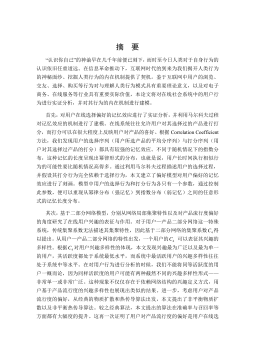
 2025-01-09 6
2025-01-09 6 -
智能优化方法对神经网络的改进及应用研究VIP免费
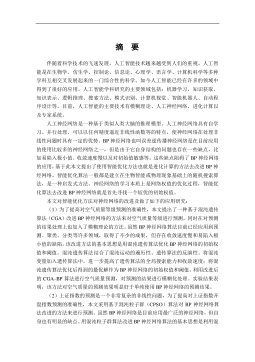
 2025-01-09 6
2025-01-09 6 -
鲜切哈密瓜保鲜技术研究VIP免费

 2025-01-09 8
2025-01-09 8 -
小城镇道路网级配方法及应用研究VIP免费
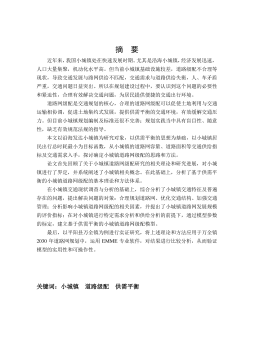
 2025-01-09 6
2025-01-09 6 -
医学信息集成测试系统的研究与实现VIP免费
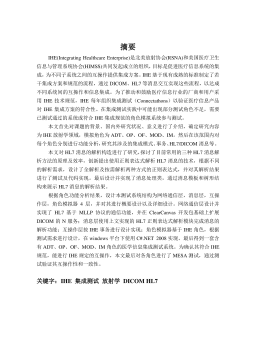
 2025-01-09 7
2025-01-09 7 -
余热驱动氨水吸收式制冷系统的理论及实验研究VIP免费
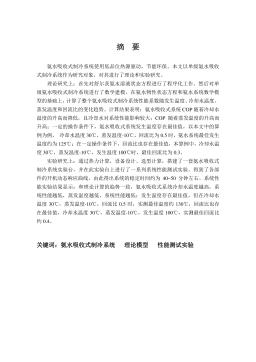
 2025-01-09 7
2025-01-09 7 -
喷雾降温技术适用性及热环境研究VIP免费
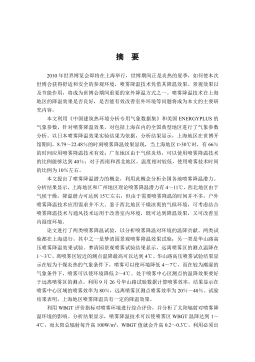
 2025-01-09 9
2025-01-09 9 -
收缩—扩张喷嘴的气泡雾化数值模拟VIP免费
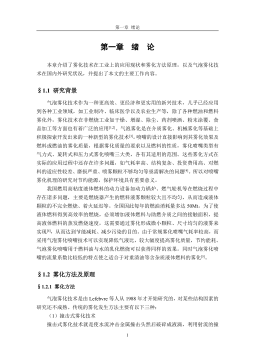
 2025-01-09 8
2025-01-09 8 -
支持供应链的工作流系统结构及其计划与调度的研究与应用VIP免费
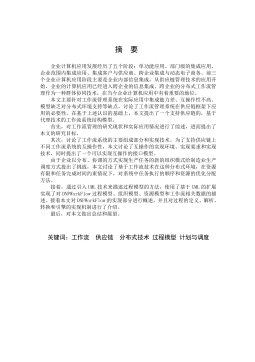
 2025-01-09 11
2025-01-09 11
作者:赵德峰
分类:高等教育资料
价格:15积分
属性:74 页
大小:3.47MB
格式:PDF
时间:2025-01-09
作者详情
相关内容
-

医学信息集成测试系统的研究与实现
分类:高等教育资料
时间:2025-01-09
标签:无
格式:PDF
价格:15 积分
-

余热驱动氨水吸收式制冷系统的理论及实验研究
分类:高等教育资料
时间:2025-01-09
标签:无
格式:PDF
价格:15 积分
-

喷雾降温技术适用性及热环境研究
分类:高等教育资料
时间:2025-01-09
标签:无
格式:PDF
价格:15 积分
-

收缩—扩张喷嘴的气泡雾化数值模拟
分类:高等教育资料
时间:2025-01-09
标签:无
格式:PDF
价格:15 积分
-

支持供应链的工作流系统结构及其计划与调度的研究与应用
分类:高等教育资料
时间:2025-01-09
标签:无
格式:PDF
价格:15 积分






